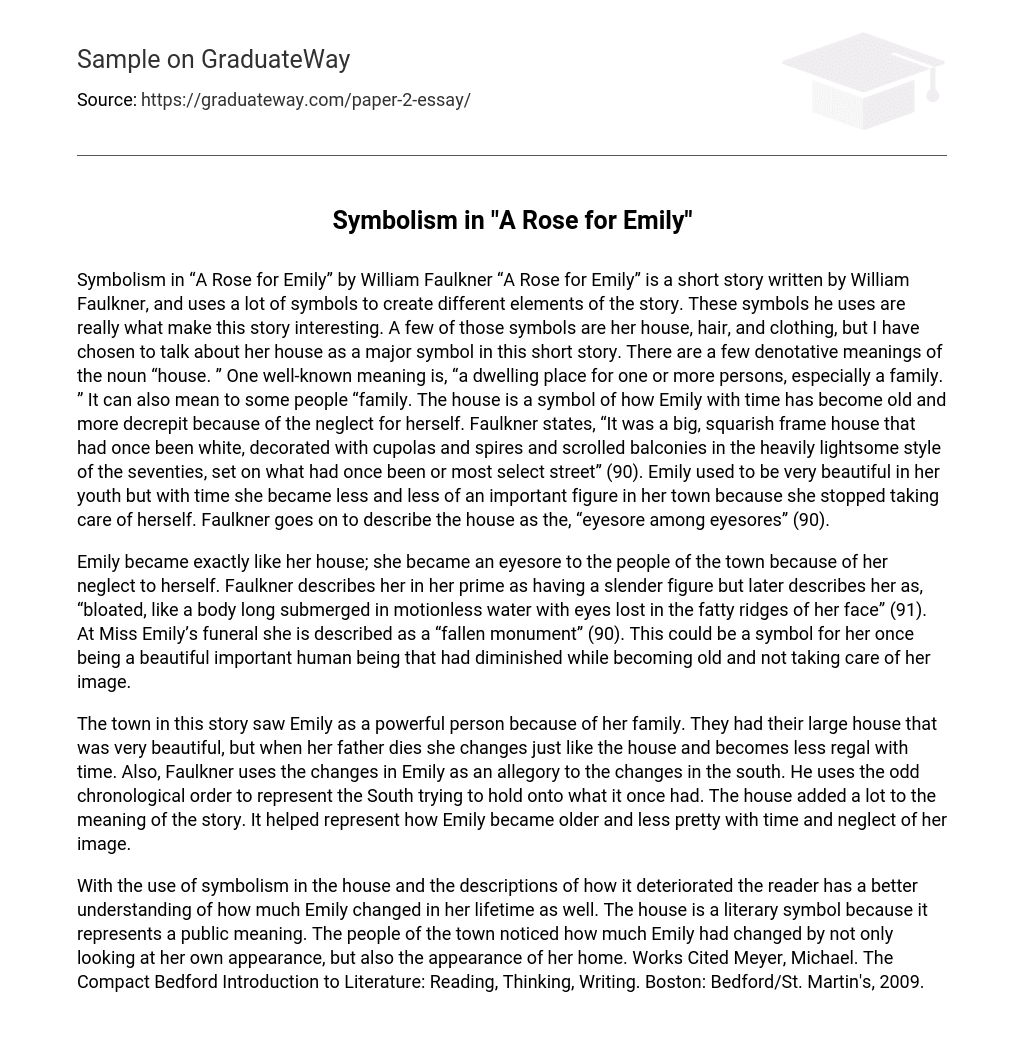In his short story “A Rose for Emily”, William Faulkner employs various symbols to convey different aspects of the narrative. These symbols are the driving force behind the story’s intrigue, and among them are Emily’s house, hair, and clothing. However, I will focus on her house as a key symbol in this tale. The noun “house” possesses multiple denotative meanings. One commonly understood definition is “a dwelling place for one or more persons, especially a family.” However, to some individuals, it can also signify “family.” In this story, Emily’s house represents her aging and deterioration over time due to self-neglect. Faulkner depicts it as a grand structure with square frames that was once white, adorned with cupolas, spires, and scrolled balconies in the exuberant style of the 1970s. It was situated on what used to be the most desirable street. As Emily aged, she neglected herself and faded from an important figure in her town. Faulkner further describes the house as an “eyesore among eyesores.”
Emily became like her house, an eyesore to the townspeople due to her neglect of herself. Faulkner portrays her initially as slender, but later describes her as bloated and with eyes lost in the fatty ridges of her face. At Emily’s funeral, she is referred to as a fallen monument. This could be seen as symbolic of her former beauty and importance diminishing as she aged and neglected her appearance.
The town in this story perceives Emily as an influential individual due to her family background. They admire her splendid and elegant home. However, upon her father’s demise, she undergoes a transformation similar to that of the house. Over time, Emily becomes less majestic. Faulkner’s use of Emily’s character development serves as an allegory for the changes in the South. Through the incorporation of an unconventional chronological order, Faulkner portrays the South’s struggle to hold onto its former glory. The house itself holds profound significance within the narrative. It symbolizes Emily’s aging and declining beauty as she neglects her appearance over time.
By utilizing symbolism in the portrayal of the house and its gradual decay, the text offers a comprehensive insight into Emily’s transformation throughout her life. The house serves as a symbolic representation, embodying a collective significance. The townspeople observe Emily’s conspicuous change not only through her personal appearance but also by observing the state of her residence.
Works Cited: Meyer, Michael. The Compact Bedford Introduction to Literature: Reading, Thinking, Writing. Boston: Bedford/St. Martin’s, 2009.





